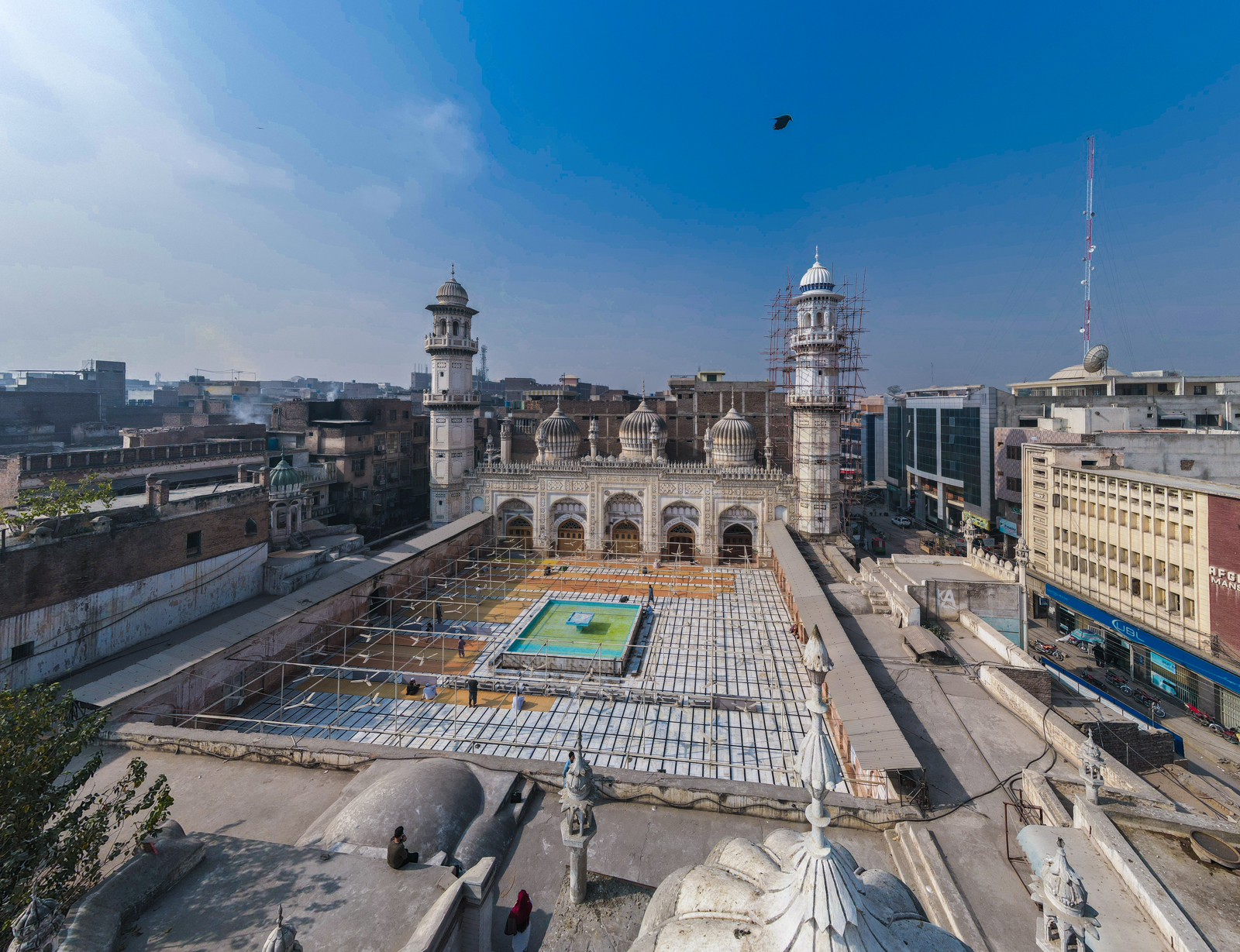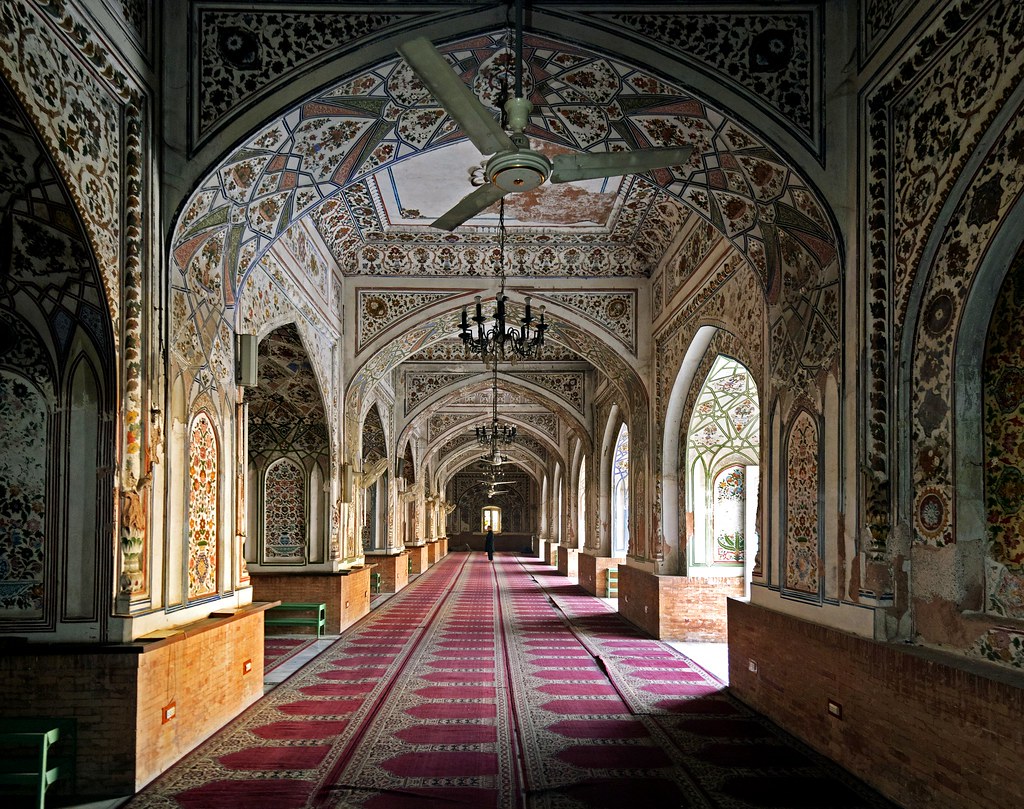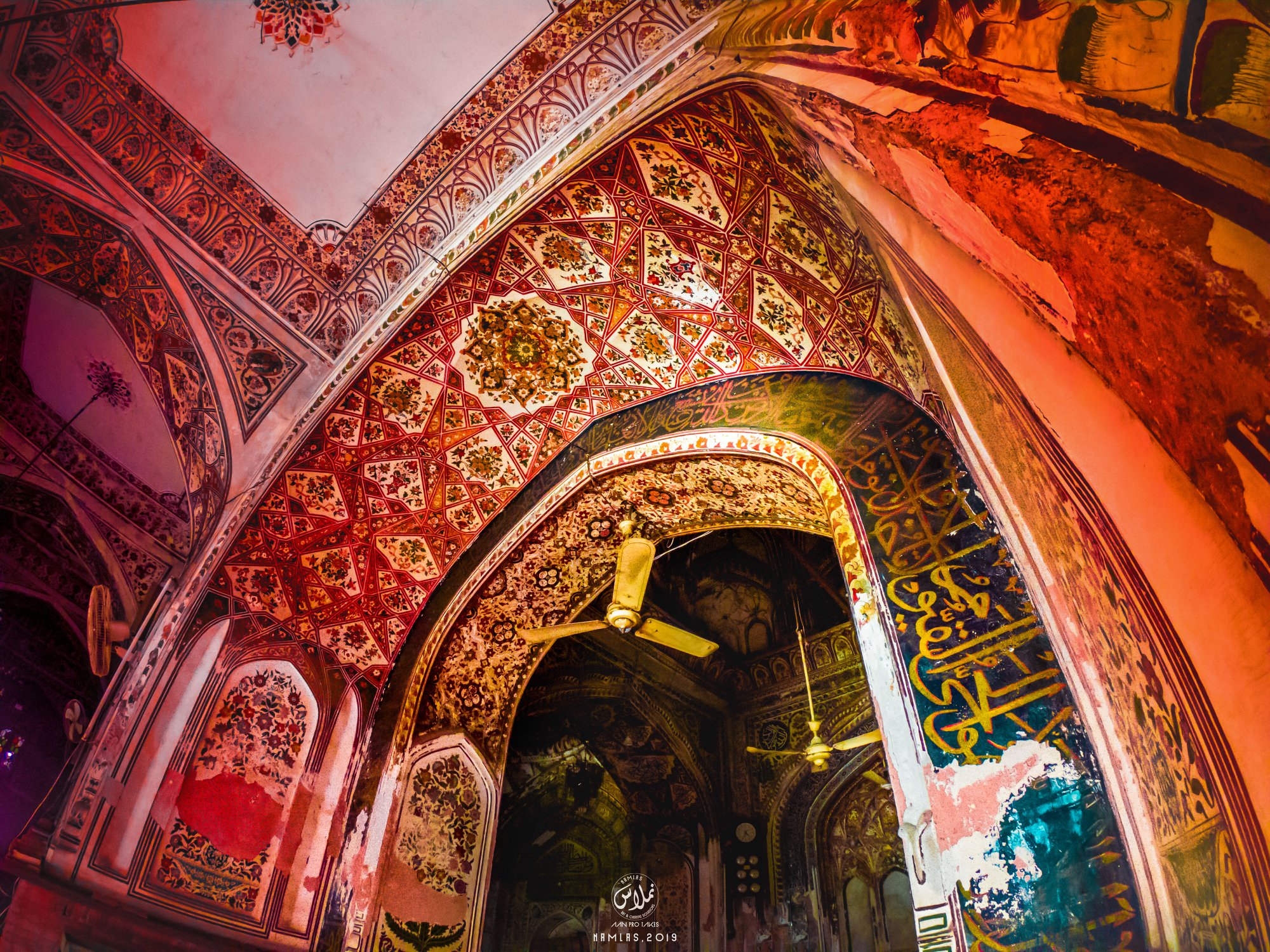Mahabat Khan Mosque

Introduction
Mahabat Khan Mosque is a 17th-century Mughal-era mosque located in the historic Qissa Khwani Bazaar of Peshawar, Khyber Pakhtunkhwa. It is a symbol of the city’s rich Islamic heritage and a stunning example of Mughal architecture in the region.
Historical Background
Built in 1630 during the reign of Mughal Emperor Shah Jahan, the mosque is named after Nawab Mahabat Khan, the Mughal governor of Peshawar. It has served as a prominent place of worship and a gathering point for centuries.
Architecture and Features
- Design: Features white marble minarets, domes, and intricate floral frescoes in traditional Mughal style.
- Courtyard: A spacious open courtyard with a central ablution pool and prayer area.
- Prayer Hall: The main prayer hall is adorned with floral motifs, Quranic inscriptions, and multicolored calligraphy.
Cultural Significance
The mosque stands as a cultural and religious landmark of Peshawar. It remains a major site for Friday congregations and holds deep historical value in the local community.
Quick Facts
- Built: 1630 CE
- Location: Peshawar, Khyber Pakhtunkhwa, Pakistan
- Architectural Style: Mughal architecture with Persian and Central Asian influences
- Named After: Nawab Mahabat Khan
- Function: Mosque and heritage site
Image Gallery
.jpg)



Mahabat Khan Mosque
Location: Qissa Khwani Bazaar, Peshawar
A stunning Mughal-era mosque, known for its white marble minarets and detailed interior frescoes.
Learn more